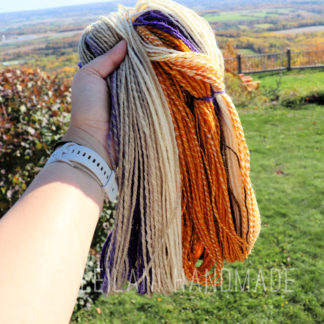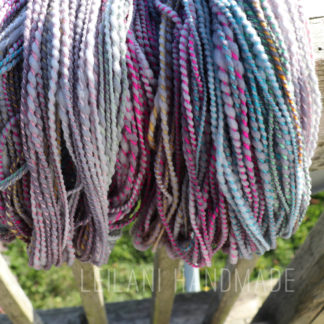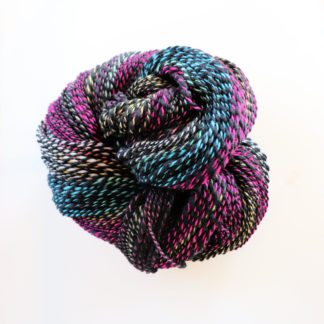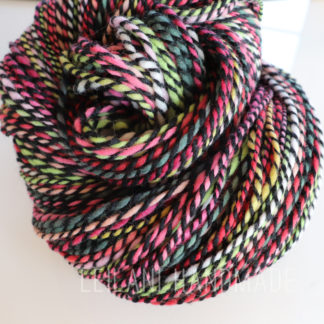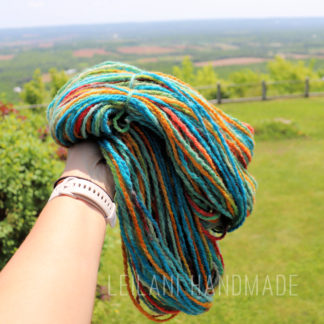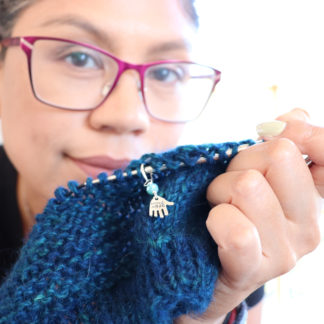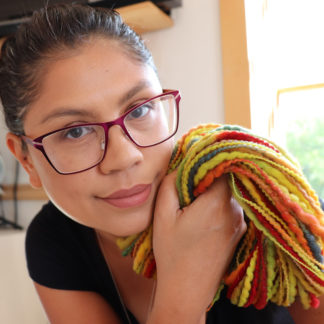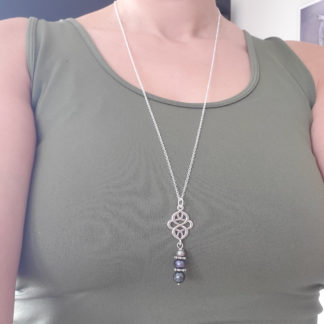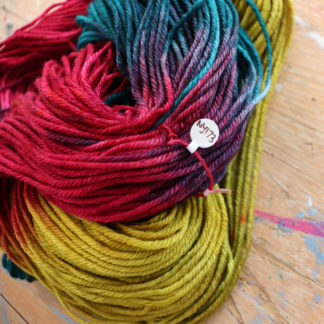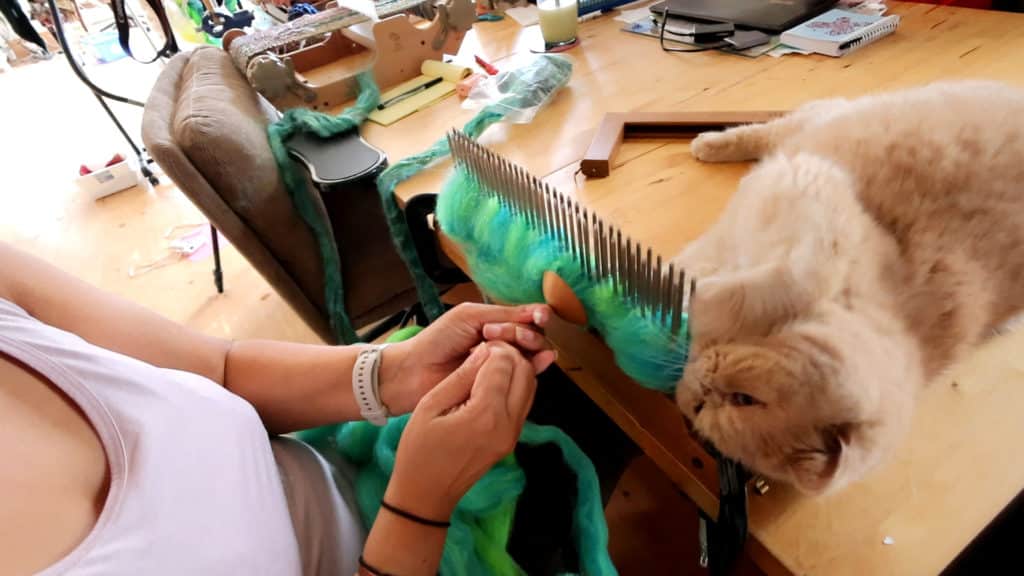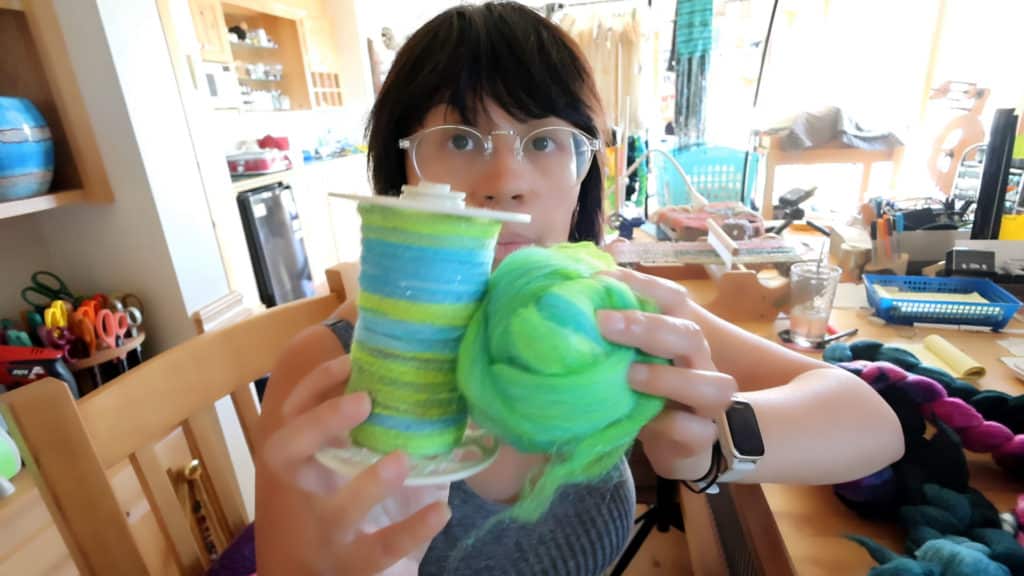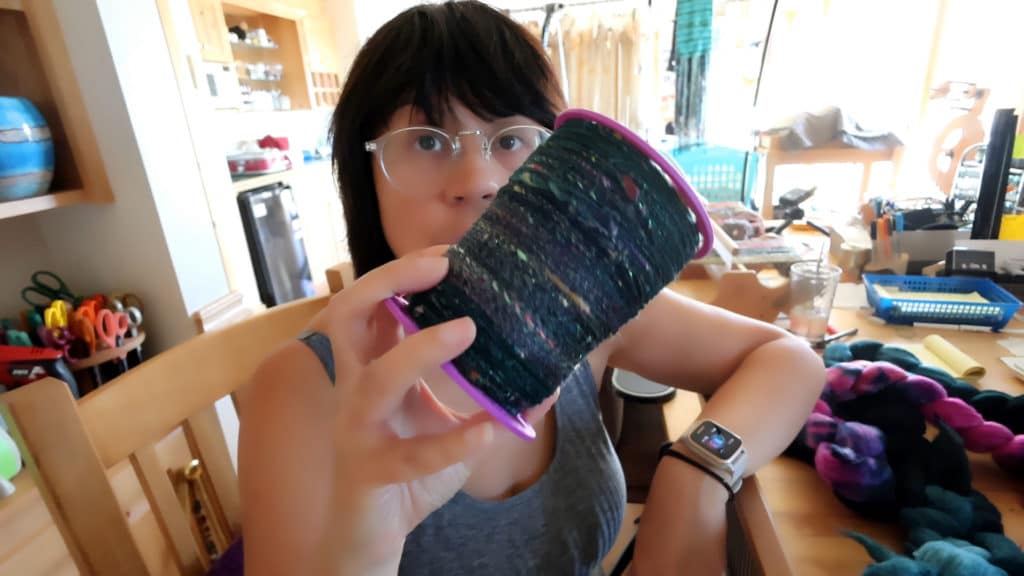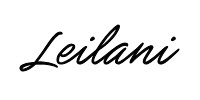The time has come to spin the textured batts and textured rovings from my previous posts for your spinning inspiration.
I make these posts for two reasons: to challenge myself, and ultimately, to give spinning inspiration to you, hand-spinners out there. We all get stuck in a rut; hopefully, I can get you out of it, even if this style of spinning isn’t your cup of tea.
My Journey to Spin (and love!) Textured Fiber
Messy. Chaotic. A vomit of color. If you prefer to spin top, chunky textured fibers and batts are probably not for you. Or is it? Let me show you what I have done recently with the handmade chunky batts and textured rovings I made in previous YouTube videos.
When I started spinning, I was drawn to the textured art batts that push the envelope. Spinners adding bits of fiber like silk, wool locks, re-purposing pieces of handspun yarn, and spinning these into yarn with the addition of objects like beads or artificial flowers – these are the handspun yarns that inspired me to learning to spin. I wanted to make art with fiber. Not to say all handspun isn’t art – because it is. I mean, I really wanted to make avant-garde yarn that you could wear or hang as artwork; that was my goal.
But as my knitting evolved, so did my spinning. I still love a funky art batt, but in a more toned-down way: less bulky yarns and more worsted-weight or thinner.
Above: three small batts I blended on my drum carder using leftover hand-dyed wool from other projects, with the addition of angora and silk, Angelina, and other fibers.
Below: Part One of spinning the textured fiber from past videos.
For Your Spinning Inspiration: Textured Fiber Part 1 & 2
Spinning the Textured Batts on my E-Spinner
I have two methods when spinning batts: ripping off chunks and spinning straight off the batt. I preferred spinning straight off the batt for these smallish batts. As they had no rhyme or reason color-wise, spinning off the batt meant I could control how much of each color could be spun at a time.
Spinning these types of batts is never boring. If you want to watch color shift and develop before your eyes, these fun textured batts are truly satisfying. I don’t advocate you always spin this way (unless you want to – believe it or not, I don’t always!), but it is a great way to let your creativity run free and reset your brain for a more civilized spinning sesh. 🙂
Next: Tackling the Textured Roving
The other projects I was working on simultaneously to help kick your spinning inspiration in high gear is textured roving blended on my hackle. I had already spun the light green roving from my original how to use a hackle video, but could not find a suitable fiber to spin with it in my stash.
So I decided to do a smooth hackle blend for comparison with the textured roving, and spin them both together (with Mr. Peanut’s help, it seems).
Although I used similar, almost identical fibers & colors, the contrast of a smooth blend vs. a side-by-side chunky blend was fascinating. The smooth blend was nearly a homogeneous color. I created a 3-ply yarn by plying these two fibers spun as separate singles with a bamboo singles. I found some bamboo roving in my stash that I had dyed similar colors.
Above: comparison between the original textured hackle fiber, blended side-by-side, and the smooth, evenly blended hackle roving.
You can watch Part Two below to see the final created yarns.
The video also featured the spruce green textured fiber, which I made into a 3-ply by dividing this bobbin into two and plying it with some spruce-colored Merino top that I also dyed.
This particular yarn is the epitome of the textured yarn I strive to create. Soft, squishy with lots of interesting inclusions with bits of sari silk, Angelina, angora and other colors of bits of wool roving.
I adored the finished yarn despite the singles reminding me of an artificial Christmas tree! The 3-ply yarn would look great paired with a solid color or on its own, giving me lots of options for a unique finished project. As I always say, never judge a handspun yarn until it’s finished. 😉
This was a large project for me, spanning two months, during which I dyed and blended most of the fiber from scratch or pulled from my stash from previously hand-dyed projects. It definitely was wearing on both my body and attention span. But it is also so rewarding to push myself to create yarn outside of just spinning from straight top or raw combed fiber in colors that I am comfortable with.
I hope my experimenting helps you with your creativity and provides you with lots of spinning inspiration. 🙂

